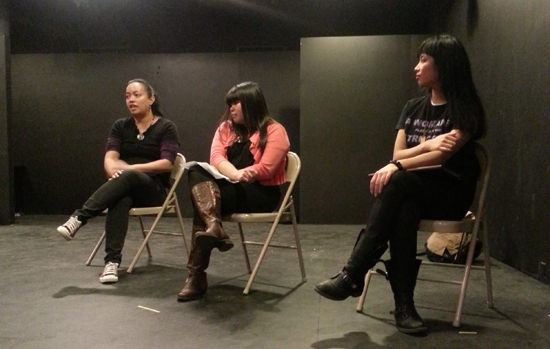Moans, writhes, orgasms … it wasn't your typical UniPro event. On March 9, UniPro hosted The Vagina Monologues: Breaking the Maria Clara Image at Cap21 Studios. Based on interviews with real women, The Vagina Monologues is a play by Eve Ensler featuring hilarious, heartbreaking and uncomfortable confessions from different women about their, well, vaginas, relating to their personal stories of femininity and sexuality.
UniPro’s The Vagina Monologues production starred an all-Pilipina cast, with a special Pilipina twist added to parts of the script. In one monologue, for example, a “lola” ashamedly discussed her “down there.” Then at the end of the play, the cast stood side by side onstage, taking turns to share disturbing facts about victims of sexual violence:
"One in three women on the planet will be beaten or raped in her lifetime. That’s more than one billion women living on the planet today."
"The NDHS revealed that one in five women aged 15-49 has experienced physical violence since age 15."
"One in ten Filipino women aged 15-49 has experienced sexual violence."
Following the play was a panel of representatives from various women’s rights organizations. These distinguished women included Ivy O. Suriyopas, Director of the Anti-Trafficking Initiative at AALDEF; Kristina K. Joyas, a member of AF3IRM (and UniPro’s Director of Staff Development); and Zarah K. Viñola, Vice-Chairperson for FiRE. They discussed ways their organizations are tackling issues that affect Pilipinas, as well as their own definitions of the term “feminist.”
Confronting topics ranging from rape and sexual violence to self-image and self-discovery, the night was emotional and thought-provoking. It was a seamless event and production, organized by Kirklyn Escondo, our Community Building Director, and directed by Precious Sipin and Leslie Espinosa. Music also added to the drama of the play, with Andre Ignacio Dimapilis on the didgeridoo and Andy Jean-Gilles on the djembe drums. Lastly, Stella Ma also spoke on behalf of the NYC Chapter of the National Pacific American Women’s Forum, informing the audience of the recent publication of their Health Resource Guide.
It’s rare seeing Pilipinas onstage, portraying characters with real depth to whom we can actually relate. It’s a stark difference from the roles Asian Americans are usually degraded to: the token Asian friend, unnamed nerd or exotic lover. Let’s not forget the title of our production, which references Maria Clara, the iconic character from Jose Rizal’s Noli Me Tangere. This tragic heroine is known for her sweetness and obedience; she is a symbol (or perhaps a caricature) of the ideal Pilipina. Well, with all the talk of vaginas that Saturday night, the strong and talented women of UniPro’s production of The Vagina Monologues couldn't be any farther from Maria Clara.





